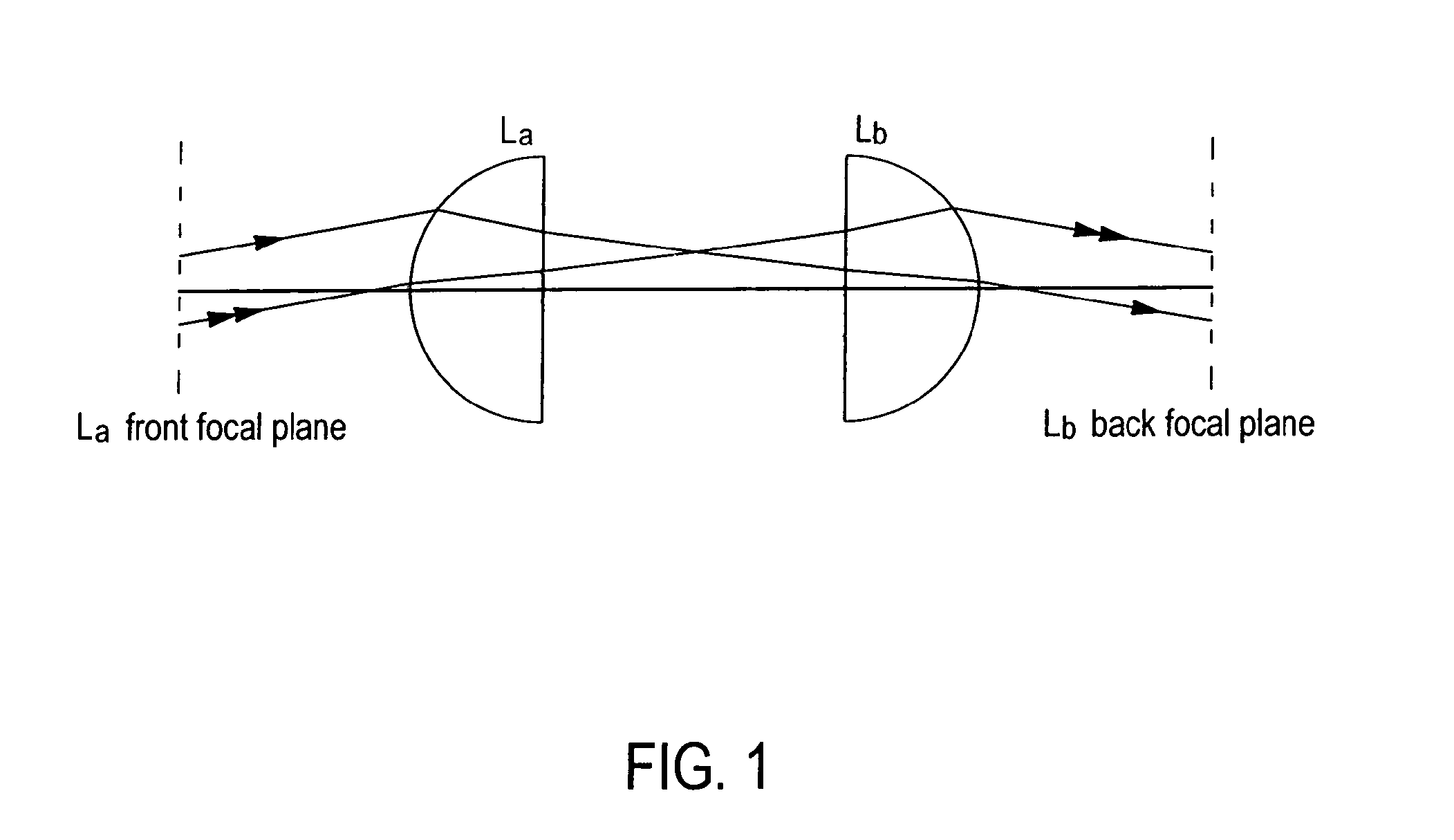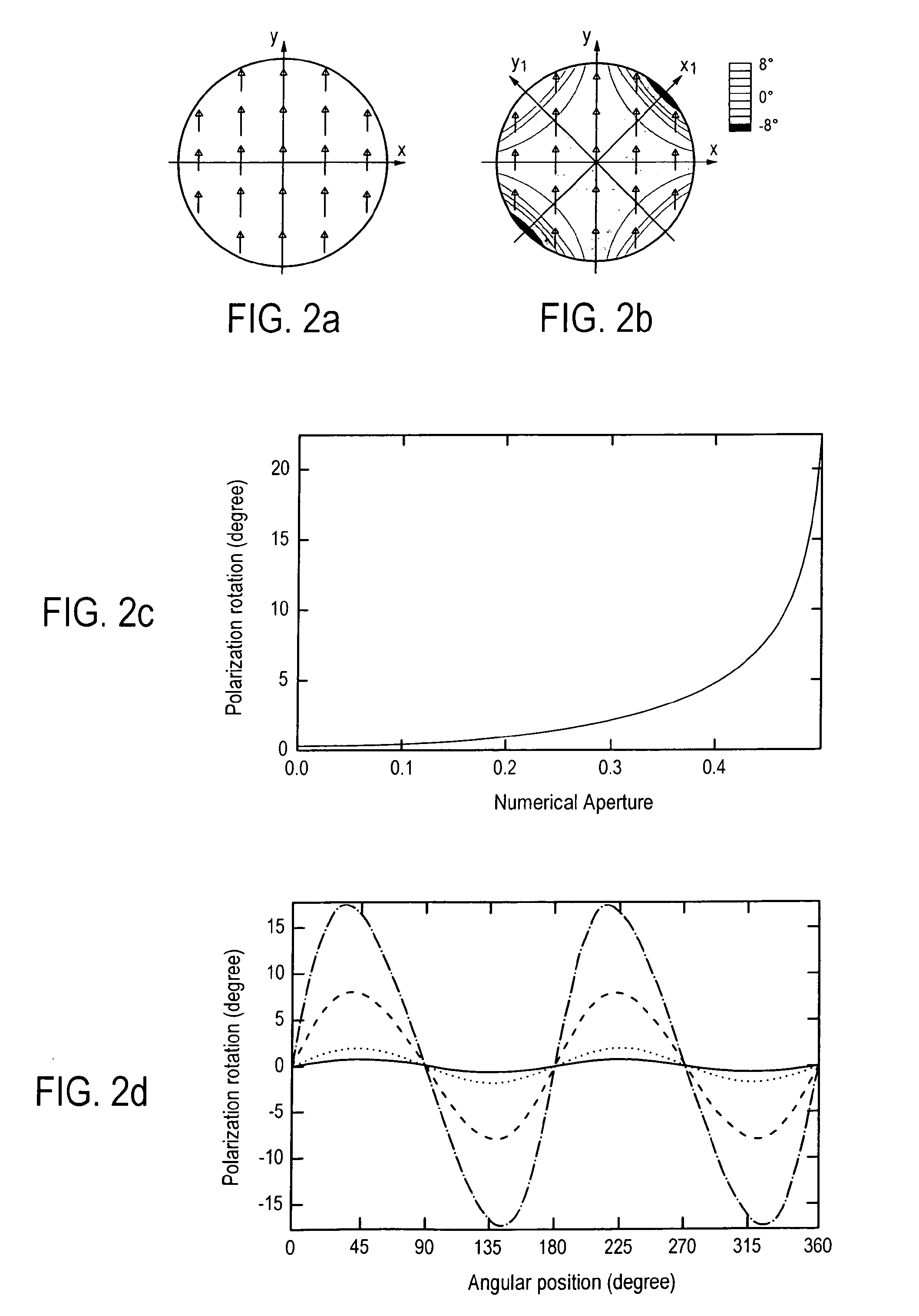Method for reducing interference and crosstalk in double optical tweezers using a single laser source, and apparatus using the same
a double optical tweezer and laser source technology, applied in the direction of accelerators, masers, laser details, etc., can solve the problems of limiting the force resolution of force measurements, non-homogeneous polarization when it exits the microscope, and parasitic signal that may then arise from relative drift, etc., to reduce the occurring crosstalk in force measurements
- Summary
- Abstract
- Description
- Claims
- Application Information
AI Technical Summary
Benefits of technology
Problems solved by technology
Method used
Image
Examples
Embodiment Construction
[0021]In a first part, we are going to discuss the rotation of polarization in a microscope. Conventional polarizing microscopy suffers from the rotation of polarization on lens surfaces or slides, which results in a loss of contrast when imaging a sample. A simple explanation of the rotation of polarization can be given as follows. For a linearly polarized beam refracting on the surface of a lens, the electric field exhibits different parallel and perpendicular components relative to the plane of incidence, depending on the position on the lens. Since, according to the Fresnel equations, the two components are refracted differently, the polarization of the total electric field is rotated. As described in more detail in the following description, this effect induces difficulties when detecting force with double optical tweezers.
[0022]For sake of simplicity, the propagation of light is described in a simple model, to give a qualitative understanding of the effects coming from the rot...
PUM
 Login to View More
Login to View More Abstract
Description
Claims
Application Information
 Login to View More
Login to View More - R&D
- Intellectual Property
- Life Sciences
- Materials
- Tech Scout
- Unparalleled Data Quality
- Higher Quality Content
- 60% Fewer Hallucinations
Browse by: Latest US Patents, China's latest patents, Technical Efficacy Thesaurus, Application Domain, Technology Topic, Popular Technical Reports.
© 2025 PatSnap. All rights reserved.Legal|Privacy policy|Modern Slavery Act Transparency Statement|Sitemap|About US| Contact US: help@patsnap.com



